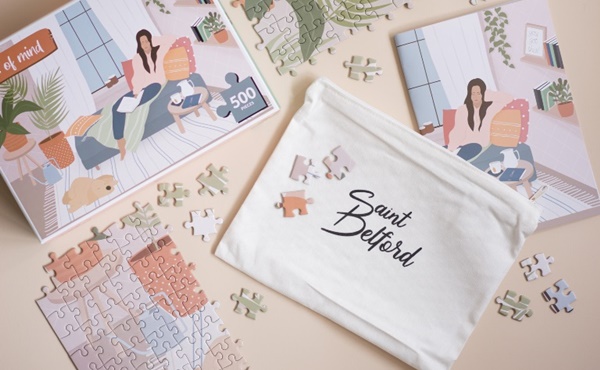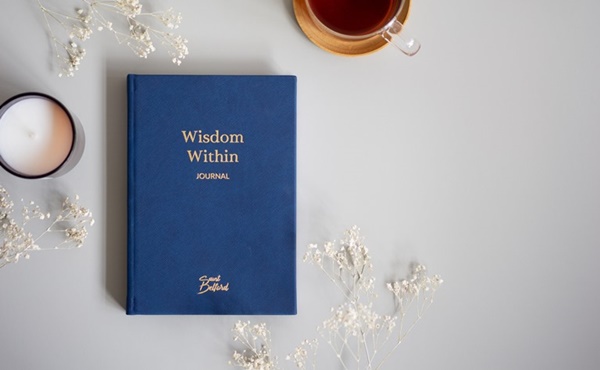How a burnout led to the reinvention of the diary
Four years ago, a burnout set Alex Phillips and Tom Stanford out on a journey of self-discovery to find mindfulness, self-care and personal growth.
The stress of Phillips’ digital marketing job wasn’t doing her any favours and just before returning to work she set off on a mission to find a planner that would help her prioritise her health over productivity and offer reminders and encouragement to put herself first, and avoid falling into the pitfalls of bad habits once again.
Frustrated with not being able to find what she was looking for, Phillips lamented to Stanford about the lack of importance that wellbeing played in these diaries, where ‘to do’ lists and schedules reigned supreme. A light bulb went on for Stanford and they decided to create a diary business.

This led to the launch of Saint Belford. The Melbourne couple ‘reinvented’ the diary and launched its first edition of Curation in October 2017, packaging all 1,000 copies from their St Kilda apartment.
Whilst Saint Belford is a brand that sells products, it’s much more than that. It’s a brand about living a purposeful life, prioritising your health and wellbeing and self-care. It’s a brand that is turning a seasonal business to an ‘all year round’ business, flipping the traditional business model on its head.
With more and more people working from home this year and in the foreseeable future, Phillips shares six tips to help you work from home effectively.

CREATE A DEDICATED WORKSPACE INSTEAD OF MOVING AROUND YOUR HOUSE.
You want to be able to associate a specific area of your house as your temporary place of work. In an ideal world, this would be a separate room.
I understand that it’s not always possible, especially when you’re living in an apartment. When we lived in an apartment, we used half of the dining table as our desk.
If possible, try to avoid places like your bed or the couch where you would typically relax. Your brain associates certain objects and spaces with specific activities so using the same space to work and relax can create mixed signals for your brain making it difficult for you to work productively in that space because it is strongly associated with relaxation.

SET BOUNDARIES AROUND YOUR WORK HOURS.
Pick a start time and finish time and stick to it. There’s nobody telling you to start or finish work. You don’t have a train to catch so it’s easy to get caught up with work and let your work hours bleed into your personal hours. Set an alarm to remind you that the work day is over and it’s time to log out.
ELIMINATE DISTRACTIONS OR CREATE BARRIERS BETWEEN YOU AND THESE DISTRACTIONS.
If your phone is a distraction and there’s nobody telling you to get off your phone, put it in a different room when you’re working. It’s a lot easier for you to focus on work when your phone isn’t on the desk tempting you to pick it up every few minutes.
If the TV is a distraction, unplug it.

If Netflix is the killer, log out of it. By doing that, you’re making it harder for you to access it and therefore creating a barrier between you and your distraction.
USE YOUR COMMUTE TIME FOR SOME FORM OF EXERCISE.
Look up workouts you can do on YouTube or just search online workout programs. When we were travelling and didn’t have access to physical yoga studios, we used bsy.tv.
TAKE REGULAR BREAKS THROUGHOUT THE DAY.
Take breaks to recharge and refuel. Go outside. Get some fresh air and sunlight. Have lunch outside.

USE TECHNOLOGY TO STAY CONNECTED.
Leverage tools like Facetime, Zoom, Skype, Messenger. When I started working from home, I felt so socially isolated because I’d gone from daily interactions without even trying to having to consciously fill up my social cup. So give your friends a call, FaceTime, use zoom to catch up with your coworkers.
Lastly, recognise that this is a big transition, so be patient and be kind to yourself. Nothing’s going to be perfect. Do the best you can with what you have.






